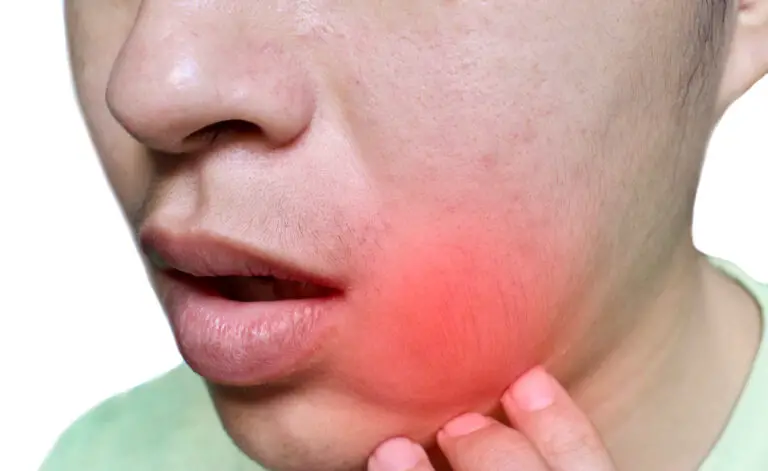Tooth pain can range from mild sensitivity to severe, debilitating pain. Before reaching for toothpaste to numb tooth pain, it’s important to understand what’s causing the pain and when to see a dentist. This comprehensive guide examines how toothpaste can temporarily relieve pain, its limitations, and when professional help is required.
Causes of Tooth Pain
Tooth pain stems from irritation inside the tooth or in surrounding tissues. Common causes include:
Dental Cavities
Cavities result from decay eating away at enamel and dentin. As the cavity extends deeper into inner tooth layers, it can reach the pulp tissue containing nerves and blood vessels. This leads to inflammation and pain. The severity depends on the depth of decay.
Dental Trauma
Injuries that crack, chip or fracture a tooth put inner pulp tissue at risk of bacterial infection. This causes inflammation and acute pain. Cracks allow penetration of temperature extremes, air, and fluids that trigger pain.
Periodontal Disease
Gum disease erodes gum tissue, exposing the tooth root and dentin tubules. This causes pain with hot/cold foods or brushing. Advanced disease damages bone, leading to loose teeth that cause pain with pressure.
Teeth Grinding/Clenching
Excessive force from these habitual activities stresses teeth and muscles. This can inflame nerves and cause facial muscle spasms, causing dull achy pain.
Dental Treatment Side Effects
Procedures like fillings, crowns, braces or tooth extractions can leave teeth sensitive afterward as tissues heal.
Sinus Infections
Infections and inflammation in maxillary sinuses behind upper teeth can sometimes radiate pain to those tooth surfaces.
How Ingredients in Toothpaste Reduce Pain

Specialized toothpastes aim to numb nerve sensitivity causing pain. They work through various mechanisms:
Nerve blocking agents
Potassium nitrate prevents pain signals from reaching the brain. It blocks transmission between nerves in the tooth pulp and trigeminal nerve that carries pain signals to the brain.
Most toothpastes contain 5-10% concentrations of potassium nitrate. At higher prescription strength concentrations of 15-20%, it provides stronger nerve blocking effects.
Tubule occluding agents
Exposed dentin tubules allow fluid changes that trigger pain. Stannous fluoride react with calcium in saliva to form calcium fluoride crystals that plug and seal tubules. Strontium chloride also occludes tubules through protein precipitation.
Arginine and calcium carbonate work together to physically block tubules. Arginine adheres to dentin, attracting calcium which sticks to it and creates a tubule seal.
Anti-inflammatory agents
Inflamed dental pulp tissue can lower the pain threshold. Potassium nitrate and stannous fluoride have secondary anti-inflammatory effects that help reduce inflammation.
Remineralization
Fluoride strengthens enamel and replaces lost minerals over time. This reduces sensitivity and improves pain thresholds.
Effectiveness of Toothpaste for Pain Relief
How well toothpaste numbs tooth depends on:
- Active Ingredients – Potassium nitrate, stannous fluoride and strontium chloride offer the best pain relief results. Fluoride has mild desensitizing effects. Ingredients like baking soda only provide temporary, mild relief.
- Concentration – Higher percentages of active ingredients increase effectiveness. Prescription strength toothpaste contains more than over-the-counter versions.
- Frequency of use – Brushing twice daily gives better pain relief than occasional use. Stopping use causes recurrence of pain.
- Source of pain – Works well for superficial sensitivity but not for inner cracked tooth or pulp inflammation pain.
- Extent of damage – Helps mild sensitivity but not severe or acute toothaches requiring dental treatment.
- Individual variation – Due to factors like diet, oral hygiene and tooth anatomy, people respond differently.
Limitations of Toothpaste for Pain Relief

While toothpaste can temporarily numb some mild pain, it has distinct limitations:
- Short duration – Effects last about 1-2 hours after brushing before wearing off.
- Doesn’t treat underlying causes – It simply masks symptoms instead of treating the real problem.
- Ineffective for severe/chronic toothaches – Any intense, persistent, recurring pain needs professional help.
- Can’t reach inner tooth – It only treats surface sensitivity not inner cracked tooth or pulp pain.
- Results vary individually – It works better for some people based on their unique oral environment.
- May cause gum irritation – Some ingredients like stannous fluoride can irritate soft tissues with overuse.
Professional Dental Treatments for Tooth Pain
Toothpaste alone can’t resolve moderate to severe toothaches. Seeking professional dental treatment is crucial. Dentists identify the exact cause and provide appropriate solutions:
- Fillings – Fill cavities completely after removing all decayed material to prevent bacterial irritation of pulp tissues.
- Root canal therapy – For inflamed or infected pulp, the pulp tissue, nerves and blood vessels are removed and the inner tooth sterilized and sealed.
- Crowns or tooth extraction – Badly cracked or fractured teeth causing severe pain often require crowning or extraction if the damage is beyond repair.
- Antibiotics and drainage – Severe infections causing abscesses require antibiotics, root canal treatment, or extraction for prompt drainage and relief.
- Bite adjustments – Misaligned teeth putting excessive biting pressure on a tooth can be relieved by orthodontic adjustment.
- Nightguards and physical therapy – Jaw muscle pain from clenching/grinding is treated with nightguards and physical therapy to reduce muscle spasms.
Home Remedies to Help Numb Tooth Pain
Some home remedies can provide temporary numbness or relief in addition to desensitizing toothpaste:
- Ice packs – Ice helps constrict local blood vessels reducing fluid movements that trigger pain. Hold it against the cheek near the painful tooth for 15 mins on and off. Don’t place directly on the teeth.
- Clove oil – Has numbing properties due to eugenol compound. Apply a small amount on cotton and gently rub the tooth and gums for 1-2 minutes.
- Onion – Contains anti-inflammatory sulphur compounds. Cut a slice and hold it pressed against the painful tooth for a few minutes to relieve sensitivity.
- Salt water rinse – The warm solution helps reduce swelling and inflammation. Mix 1 tsp salt in a cup of warm water and rinse for 30 seconds.
- Garlic – Contains compounds like allicin that have antimicrobial and analgesic effects. Crush some garlic and apply to the troubling tooth for temporary relief.
However, these home remedies don’t treat the underlying problem and only offer short-term numbness. Seek professional dental help for persistent pain.
When to See a Dentist Immediately

Visit your dentist on an emergency basis if you have:
- Severe constant pain disrupting sleep
- Severe sensitivity to hot/cold foods
- Facial swelling around the tooth
- Gum redness or pus discharge
- Fever along with the toothache
- Pain when biting or chewing
- Tooth pain without an obvious trigger
Never delay getting help for unexplained recurring or worsening tooth pain, facial swelling, or difficulty eating/drinking. These require immediate dental care to prevent complications like infections spreading.
Conclusion
Toothpaste can only provide temporary numbness from superficial sensitivity, not treat more serious dental pain issues. While using desensitizing toothpaste regularly may offer some surface level nerve pain relief, visit your dentist right away for any moderate to severe toothaches. They will examine the tooth, diagnose the real cause and provide proper treatment. Don’t rely solely on toothpaste to resolve persistent tooth pain problems.
Frequently Asked Questions
Q: Why does toothpaste numb my mouth?
A: The numbing sensation from toothpaste is usually due to menthol, added to many popular brands. Menthol activates cold-sensitive receptors in the nerves of your mouth that blocks pain signals temporarily, creating a numb feeling when you brush.
Q: Is it safe to use toothpaste to numb toothache pain?
A: Using toothpaste to numb mild tooth sensitivity or pain is generally safe. But don’t depend on it to treat any severe, constant, or recurring toothaches. These indicate a dental issue needing professional treatment. Only use toothpaste for temporary relief of minor sensitivity.
Q: Which toothpaste ingredients help numb nerve pain?
A: Potassium nitrate and stannous fluoride are most effective for numbing nerve-related sensitivity and pain. They work by preventing pain signals from reaching the brain. Look for these in toothpastes marketed for sensitive teeth.
Q: How long does the pain relieving effect of toothpaste last?
A: Ingredients like potassium nitrate or stannous fluoride provide 1-2 hours of pain relief after brushing. For ongoing benefit, you need to use desensitizing toothpaste twice daily. Once you stop, pain relief effects wear off.
Q: Can I put toothpaste on my tooth overnight to numb pain?
A: It’s inadvisable to leave toothpaste sitting on teeth overnight. Most toothpastes contain abrasives that can damage enamel with prolonged direct contact. Rinse thoroughly after brushing and don’t let it sit.






